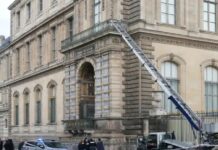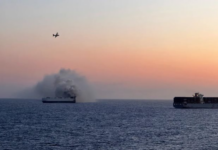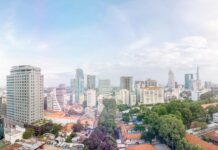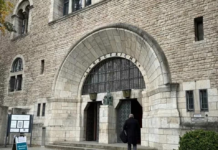Net City, China
Net City – a floating city built in Shenzhen, China. The project, announced by a Chinese technology conglomerate in 2022, is touted as a car-free supercity almost the size of Monaco.
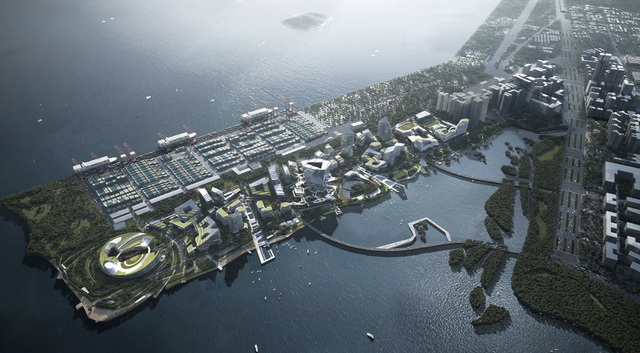
Net City prioritizes pedestrian traffic and restricts conventional vehicles (Source: NBBJ)
According to the plan, this “city within a city” will create green spaces for pedestrians and prioritize self-driving cars over more than 2 million square meters of urban development along the Pearl River.
NBBJ, the American company responsible for the development of the project, says that it is not an isolated and secure island but a bustling city. “People will pass through and connect with each other, and it will become an important center of Shenzhen.”
Oceanix Busan, South Korea
Oceanix Busan is another floating city created by the South Korean government to address the serious land shortage around the city of Busan. This issue is expected to become more urgent in the future as the impact of climate change becomes increasingly evident.
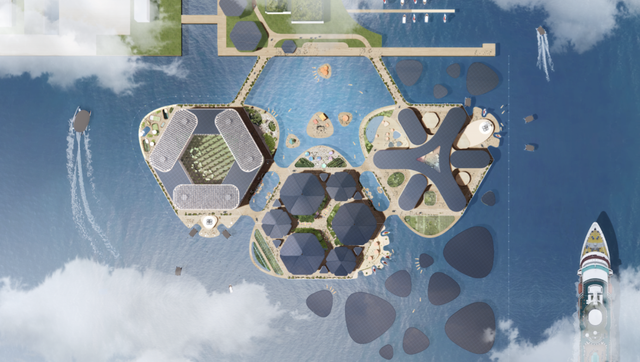
Oceanix Busan will become the world’s first floating city (Source: UN-Habitat)
The Oceanix Busan project is expected to be completed by 2025 with support from the United Nations and serve as a “prototype” for similar initiatives worldwide. Oceanix Busan is described as an extended “living link” that expands the space for South Korea’s second-largest city. The project includes three precincts, providing space for approximately 12,000 residents and visitors, with plans for future expansion.
According to the developers, this floating city is expected to generate 100% of the energy it needs from its own sources and implement water treatment, resource recycling, and urban agriculture in each precinct.
Woven City, Japan
The Woven City project is being developed by Toyota in the foothills of Mount Fuji, Japan. It is expected that the city will initially be home to around 360 residents and will increase to at least 2,000 people in the future.

Woven City render, Japan (Source: ArchDaily)
According to information on the Toyota website, these people include Toyota employees and researchers. They will have the opportunity to test and develop technologies such as artificial intelligence in a real environment. Therefore, Woven City is described as a “living laboratory” for new technologies.
While many cities focus on futuristic metal and glass designs, most buildings in Woven City will be made of wood, using traditional techniques performed by industrial robots.
Modern supercities are emerging not only as dreams in imagination but also as realities gradually taking shape around the world. Leveraging advanced technologies and sustainable living environment designs, these cities represent progress and the harmonization of humans with nature.
The Line, Neom, Saudi Arabia
In the deserts of Saudi Arabia, the government is embarking on a highly ambitious project to build the Neom supercity. The project, with a total investment of over $1 trillion, is expected to be completed by 2026.
Once completed, “The Line” residential area will stretch over 120km and include skyscrapers made of glass, an artificial river, and a hexagonal-shaped floating port. Notably, the city will also feature an artificial snow resort.
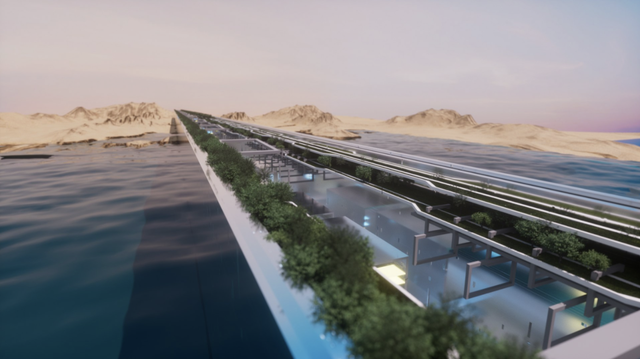
The Line render (Source: Thevidfx)
This idea was conceived by Crown Prince Mohammed bin Salman. There are even rumors that the city will bring together robots and artificial intelligence systems to serve the needs of around 9 million future residents.
Many have expressed concerns about the feasibility of this project, stemming from its enormous costs and logistics challenges involved in building a luxurious city in one of the most inhospitable regions in the world.
Floating City, Maldives
The Maldives has gone a step further than Malaysia by building a city not only floating on the water but also promoting the development of the underwater coral environment along the underparts of the regions.
According to the project website, the Floating City is created based on the local culture of the archipelago nation. Maldivians have a strong connection to the sea, so living on the water is in line with their culture and history.
The shape of the city is also inspired by the structure of a brain coral, reflecting the “goal of living harmoniously with nature and learning how to improve and respect the existence of natural coral at the center of the development process.”
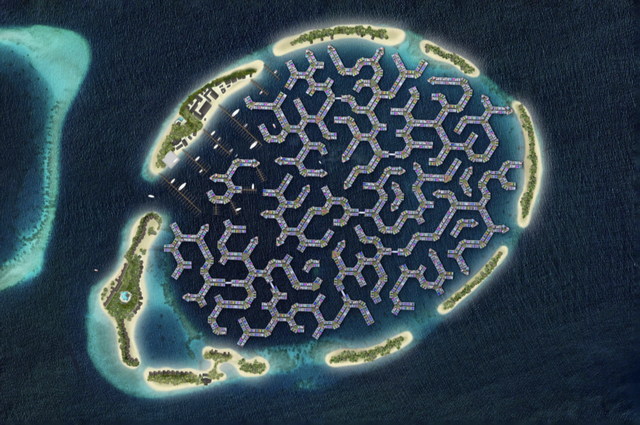
City shape inspired by brain coral (Source: Waterstudio.NL/Dutch Docklands)
The city is expected to be completed by 2027 and has the capacity to accommodate up to 20,000 people living in 5,000 floating modules.
Nusantara, Indonesia
Located on the eastern coast of Borneo Island in Indonesia, Nusantara City is expected to become the new capital of Indonesia.

Nusantara will replace Jakarta as the new capital of Indonesia (Source: Ministry of Public Works and Housing of Indonesia)
According to officials, up to 75% of the land area will be preserved for nature, making it the first carbon-neutral city in Indonesia equipped with world-class education and healthcare facilities.
This $32 billion megaproject, covering approximately 2,560 km2, was initiated by President Joko Widodo in 2019 and is planned to be divided into 5 construction phases until 2045. The first phase will begin in 2022 and is expected to be completed by August 2024.
However, some have raised questions about the financial aspect of the project. The Indonesian government has committed to covering only 20% of the costs, hoping to find the remaining funding from international investors. This has raised concerns about the project’s ability to be completed in the future.
BiodiverCity, Malaysia
Between 15,000 and 18,000 residents are expected to move to three artificial islands off the coast of Penang Island, Malaysia, after the urban enclaves are completed after 2030.
Precautions have been taken to protect the biodiversity of the coastal area and the surrounding natural habitats. Each island is connected to each other by a network of road, water, and air transportation, prioritizing bicycles and pedestrians.

BiodiverCity render, Malaysia (Source: Floornature)
“Biodiversity will become a new sustainable global destination, where cultural, ecological, and economic development is ensured. Humans and nature coexist in one of the most biologically diverse regions on the planet, on the southern side of Penang Island,” shared BIG, the developer.
Building smart infrastructure and facilities not only provide convenience but also minimize negative impacts on the environment. These supercities are shining examples, motivating people towards a brighter future where humans and nature coexist harmoniously and sustainably.



